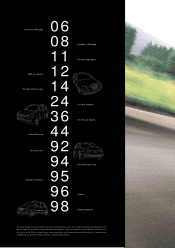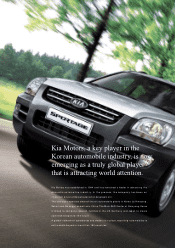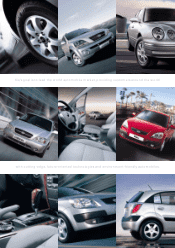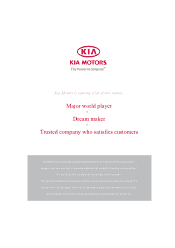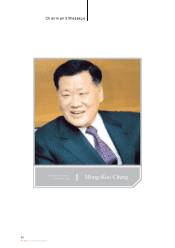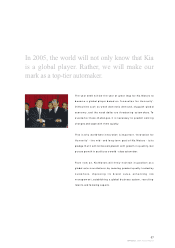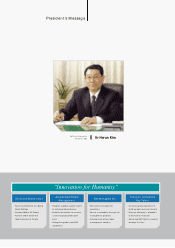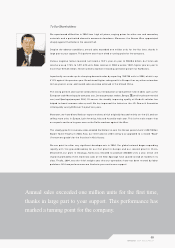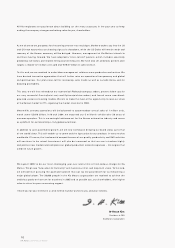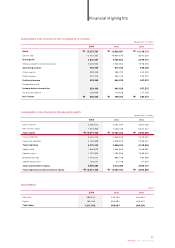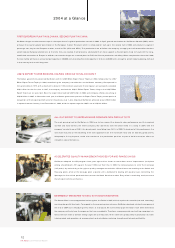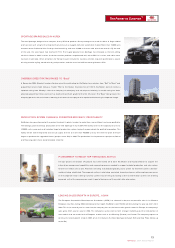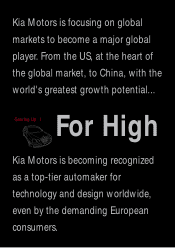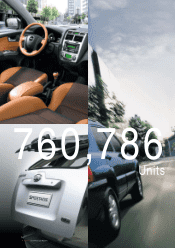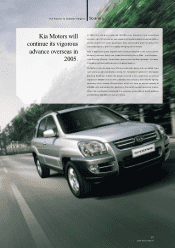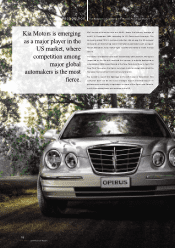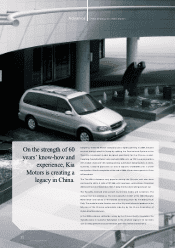Kia 2004 Annual Report Download - page 12
Download and view the complete annual report
Please find page 12 of the 2004 Kia annual report below. You can navigate through the pages in the report by either clicking on the pages listed below, or by using the keyword search tool below to find specific information within the annual report.
12
KIA Motors_2004 Annual Report
FIRST EUROPEAN PLANT IN SLOVAKIA, SECOND PLANT IN CHINA
Kia Motors began to take concrete steps in the expansion of its global production netw ork in 2004. In April, ground was broken for Kia Motors Slovakia (KMS), which
will pave the way for greater penetration of the European market. The plant, which is scheduled for start-up in the second half of 2006, will produce C-segm ent
passenger cars, key for the European market, as well as RVs (SUVs and MPVs). This production base will allow the com pany to supply and sell automobiles that best
accommodate European preferences at the time they are needed. It will provide a solid platform of close support as Kia competes head to head with the long-
established automakers in Europe. In addition, construction began on a second plant for DYK, the Chinese production subsidiary. When com pleted at the end of 2006,
the new facility will have an annual output capacity of 300,000 units, boosting Kia's total capacity in China to 430,000 units, enough to accommodate grow ing demand
in that country for the mid-/ long-term.
US$7B EXPORT TOWER RECEIVED, HELPING DRIVE NATIONAL ECONOMY
The Korean government presented Kia Motors with its US$5 Billion Export Tower Trophy in 2003, follow ed by the US$7
Billion Export Tow er Trophy in 2004, reconfirm ing the company's contributions to the Korean economy. Kia exported its
first automobiles in 1975, with a shipment to Qatar. In 1994, nineteen years later, the company's annual exports exceeded
US$1 billion for the first tim e. In 1997, the company received the US$1.5 Billion Export Tower, rising to the US$5 Billion
Export Tower just six years later. Now, the export total reached US$7 billion in 2004 and company officials are aiming at
US$10 billion in 2005. In November each year, the Korean government presents its Export Tower Trophy to companies in
recognition of their export performance for the previous July 1-June 30 period. Kia Motors achieved about US$9.5 billion
in exports between January 1 and Decem ber 31, 2004, w hile the export target for 2005 is set at US$12.6 billion.
2004 at a Glance
ALL-OUT EFFORT TO IMPROVE SALES ORGANIZATION PRODUCTIVITY
The most pressing task for Kia Motors in 2004 was to turn around the domestic sales perform ance, and this required
sacrifice and hard work by the entire company. Kia's dom estic sales remained mired in a slump in 2004, with the
company's m arket share at 23.0%, the lowest point since falling from 28.5% in 2000. To break out of this predicament, the
sales force focused on reestablishing their sales approaches on the showroom floor and on boosting productivity.
Salespeople, if they hope to, could also transfer to the production position as part of bold innovation efforts to
strengthen sales effectiveness.
EMERGENCY MEASURES TO DEAL WITH EXCHANGE RATES
The Korean Won is sure to appreciate further against the Dollar in 2005, w hile the prices for materials (raw and secondary)
are rising along w ith fixed costs. To respond to the worsening circumstances, Kia Motors declared a state of emergency at
the end of 2004 and is em ploying every means at its disposal. All non-essential payment factors have been elim inated;
the com pany will only bear the expenses that are unavoidable. Therefore, a com pany-wide cost-cutting campaign is in
force, with each team or division setting targets for cost reduction. At the same time, productivity in production and sales
is being raised, and operations at overseas plants and subsidiaries are being strengthened to boost profitability.
ACCELERATED QUALITY MANAGEMENT HEADED FOR MID-RANGE ON IQS
Kia Motors adopted the IQS program three years ago and has shown a tremendous rate of improvement (2nd place
among all participants, 58% against the year 1998) over that time. In 2005, the com pany plans to enter the mid-range
(125 points) by maintaining a firm grip on quality management activities. IQS task forces are working at the Sohari and
Hwasung plants, while at the Gwangju plant a special unit is dedicated to dealing with quality issues concerning the
Sportage, the first vehicle produced there to enter the North American market. Every effort is now being m ade to ensure
that all export vehicles are flawless.


